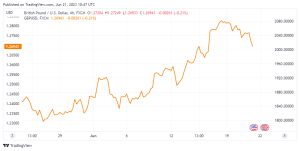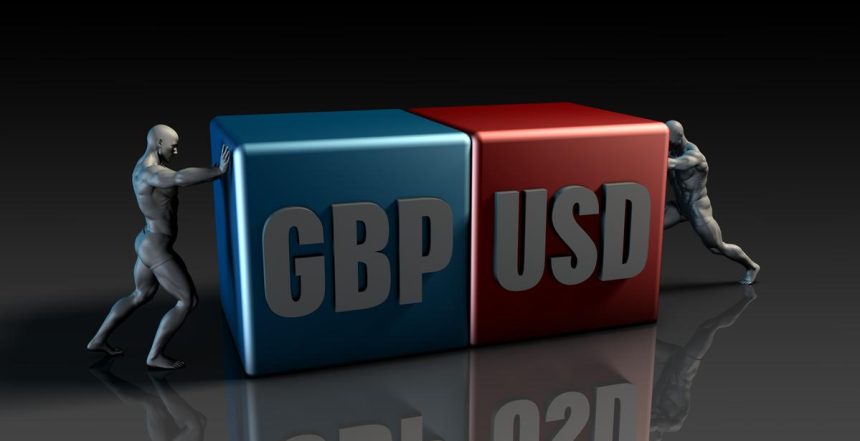After rise above 1.2800 in response to UK May inflation data. GBPUSD reversed course and fell towards 1.2700 during European trading hours on Wednesday. As investors prepare for FOMC Chairman Jerome Powell’s two-day congressional appearance. The pair’s technical view suggests a bearish move in the short-term perspective.
The Consumer Price Index (CPI) increased 8.7% year on year in May. According to the UK’s Office for National Statistics (ONS) on Wednesday. This number matched April’s gain and above the market’s forecast of 8.4%. The CPI Core, which excluding volatile food and energy prices, rose 7.1% . In the same period, up from 6.8% in April. Meanwhile, the report’s underlying statistics revealed that producer inflation. As measured by the change in the Producer Price Index (PPI), decreased 1.5% month on month in May.
Hot CPI numbers from the UK almost confirmed a hawkish Bank of England (BoE) statement on Thursday. When combined with last week’s robust wage inflation reading. The Pound Sterling’s unfavorable reaction could be the result of a ‘buy the rumor, sell the fact’ market move.
Later in the day, market participants will be watching FOMC Chairman Jerome Powell’s remarks. On the first day of his semi-annual congressional hearing.
Markets continue to estimate a nearly 20% chance of In July. The Federal Reserve (Fed) kept its policy rate steady. If Powell signals a return to rate hikes next month. The USD may gain strength and impact on the GBPUSD initially. Investors, on the other hand, are more interested in the terminal rate and if the Fed is willing to hike rates at least twice more this year.
Meanwhile, risk perception may affect GBPUSD fluctuations in the second half of the day. Since the start of the week, the risk-averse market environment has helped the USD keep its ground versus its competitors. As a result, a prolonged drop in Wall Street’s key indexes during Powell’s speech may make it difficult for the pair to regain its footing, and vice versa.
GBPUSD Technical Outlook
GBPUSD broke below the ascending regression channel, and the four-hour chart’s Relative Strength Index (RSI) indicator dipped below 50, indicating a buildup of negative momentum.
On the downside, the psychological level of 1.2700 (Fibonacci 23.6% retracement of the last upswing) serves as major support. If GBPUSD falls below that level and begins to use it as resistance, it may continue to decline towards 1.2640 (Fibonacci 38.2% retracement) and 1.2600 (psychological level, static level).

The first barrier is at 1.2750 (the lower limit of the ascending channel), followed by 1.2800 (the psychological level, static level, and mid-point of the ascending channel) and 1.2850 (the 14-month high established on Friday).









